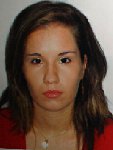PhD Theses

Claudia Raluca TUDORIE
Title: Contributions Regarding Service Orientation of Manufacturing Processes Using Stereovision Robot Systems
Supervisor: Professor Theodor BORANGIU
Final presentation in 2012
The PhD thesis is situated at the crossroads of three scientific areas of interest for the current academic world: service science, manufacturing processes and three-dimensional vision systems, so the applicability areas for the developed solutions in this thesis are varied. Although, at first sight, the three areas appear to be complementary, the ideas, concepts and proposals outlined a unified view of these areas.
This thesis was developed following two main objectives. First objective is the improvement of production control solutions through service orientation of the intelligent manufacturing systems. It was proposed to introduce the service paradigm in classical industries for providing flexibility to change and better isolation of functionality for workstations. Often in the literature, the concept of service is associated with a puzzle element, the role of services is to provide necessary information in the right place and the right time. The needs of modern industry can be improved through the implementation of services.
The second major objective presented in this thesis was to develop an application to ensure safety of human operators in a flexible manufacturing cell (FMC), application that can be reused and reconfigured, and so can be seen in terms of a service. The developed application involved working with dedicated three-dimensional devices extensively studied in this thesis.
First, the proposed theme brings basic research contributions – by defining flexible and reconfigurable manufacturing systems, based on service oriented architecture and by proposing a client/server architecture for FMC and planning for the management of existing components in an intelligent manufacturing system.
In the field of applied research, the thesis is relevant by proposing an approach for detection and tracking of human operators using Kinect device and different approaches to solve the problem of feeding a manufacturing cell.



